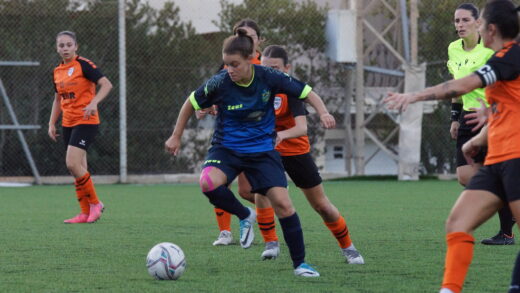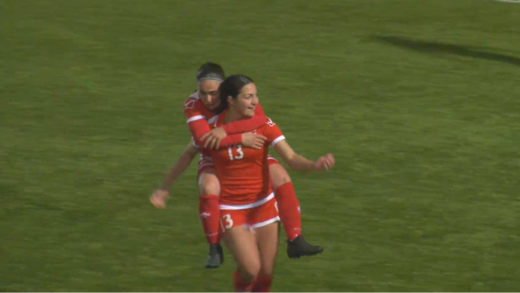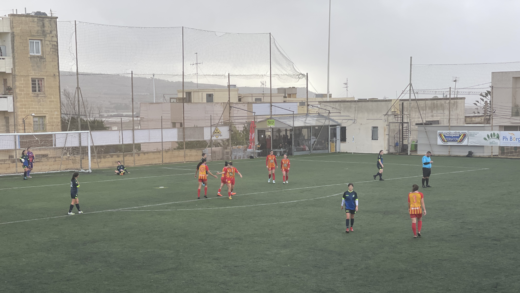Japan’s defeat at the hands of Sweden ensures that a new nation will lift the Women’s World Cup this year. The stage is set for two cracking semi-finals. Spain and Australia make their first appearance in this stage of the competition, England will bid to finally book a place in Sunday’s final, and Sweden hope that it is finally their year.
Spain and Sweden into the semi-finals
Spain and Netherlands got the quarter-finals under way in a tightly contested match that saw the Spanish team dominate much of normal time. There was still no start for Alexia Putellas for Spain, while Netherlands had to make do without Danielle van de Donk, who was suspended from the match because of her booking offences. Damaris Egurrola was called in her stead.
Like their final group stage match against Japan, the Spaniards could not quite get the ball into the net for much of the match. Meanwhile, pushing their full-backs high troubled the Netherlands, since it pushed creators Esmee Brugts and Victoria Pelova back. To make matters worse, long-balls sent forward for Lineth Beerensteyn to chase lacked the required accuracy to trouble the Spaniards.
Despite this, the Netherlands appeared to have hit the jackpot when referee Stephanie Frappart pointed to spot for a push by Paredes, only for it to be erased by VAR. However, the penalty saga did not end there, as Stefanie van der Gragt was deemed to have handled the ball inside the box in the last ten minutes of normal time. Mariona Caldentey stepped up and sent Spain into the lead.
For Stefanie van der Gragt, it seemed to be the worst possible way to end her career. However, she sought redemption and delivered one minute into injury time, as the Netherlands went back to basics by throwing on their biggest centre-back into the forward line. This time van der Gragt made a perfectly timed run behind the Spanish back-line, before putting a boot through the ball straight into the far corner to send the Oranje into ecstasy.
Jorge Vilda appeared to be scratching his head and having taken off Aitana Bonmati was forced to introduce Alexia Putellas as the match headed deep into extra time. However, substitute Salma Paralluelo still had a trick up her sleeve and fired home in the 111st minute, sending Spain into their first ever Women’s World Cup semi-final. The Oranje could not make it back-to-back finals in the competition, while Stefanie van der Gragt ends her playing career with high praise. Asked about her career and performance, Andries Jonker simply replied: “She deserves a statue.”
On the other hand, Sweden faced Japan who had steadily been earning a reputation as the dark horse in the competition. Despite this, the Swedes truly lived up to their ranking and delivered a tactical masterclass for much of the match. They nullified Japan’s ability to build attacks by disrupting the midfield channels and applying physical pressure on Japan’s midfield maestros.
Once they got the opportunity to flood forward, they did so with ruthless pace and physicality. Amanda Illestedt continued her stellar goalscoring form to send Sweden into the lead just after half an hour of play. Filippa Angeldahl doubled the lead from the penalty spot six minutes into the second half as Japan appeared to be struggling to hit their stride.
As the second half wore on, Japan grew in the game and were denied by the woodwork twice, including from the penalty spot. The Japanese kept flooding forward and were rewarded in the 87th minute by Honoka Hayashi who halved Sweden’s lead. However, Sweden went into game management mode and saw off Japan’s threat to reach the semi-final stage for the second consecutive year and fifth time in the nation’s history.
Semi-Final 1: Spain vs Sweden
The semi-final clash between Spain and Sweden will be played on Tuesday. Dominated by players who play their football in Europe’s top tiers, these two are no strangers to each other. Sweden go in as favourites based on their history and considering that they are yet to be defeated in this competition. They’ve been effective and considering that they ousted the defending champions USA and emerging favourites Japan, one suspects that they feel they can see this one through despite the stars that line-up in Spain’s squad. On the other hand, having reached this milestone, Spain will want to keep the party going.
Spain’s ability to create chances has not been effectively challenged by any team. Not even Netherlands’ back five could stop them from piling shots. However, having seen how Sweden handled Japan’s playmaking efforts, it will be interesting to see how they go about Spain’s midfield and whether they can block players like Bonmati and potentially Putellas from linking up play. If they do not, then Spain’s question will be whether they can be clinical enough in front of goal.
At the other end, Sweden have been more like Japan in their finishing ability and provided the chance, they will punish. It will be something that Spain’s back line will be wary of. The match has all the ingredients to be another mesmerising clash and one that tickles the nerves. If it ends up going to penalties, then probably Sweden’s ice-cold approach will see them through to the final. However, stranger things have happened.

Australia and England’s journey to the semi-final
The Matildas opened the second day of the quarter-finals with a meet against France. There was plenty of pressure on their shoulders and some cracks appeared in a nervy and extended penalty shootout. However, the hosts saw themselves through to a historic semi-final on home soil.
Having dominated much of the opening stints of the game, they made it more difficult for themselves than it needed to be by not putting to bed the chances they created. It saw France grow in confidence and hit the back of the net (through Wendie Renard’s header) in the dying moments of normal time. However, the hosts were let off the hook by the officials. Tensions grew as the game could not be decided in extra time, even with Sam Kerr in Australia’s front line. It seemed like the whole of Australia was tuned in to watch them make history and to their relief, they did.
Following the tense encounter between Australia and France, few were ready for the match between England and Colombia. As expected, Colombia were not scared to play their game against big opposition and delivered both in physicality and in quick passing football that had England on their back foot more than once. It was in fact the Colombians who struck first, as Leicy Santos exposed Mary Earps positioning with a cross-shot that landed in the back of the net.
However, the lead did not last longer than a few minutes. Catalina Perez fumbled a save which kept the situation alive enough for Alessia Russo to pressure and Lauren Hemp to bury into the net. The two sides went into the break locked level once more. Having been crucial in the build up to the first goal, Alessia Russo delivered the second goal mid-way into the second half. Her presence forced another error from the backline which saw her close in on the six-yard box and finish into the far corner, to England’s delight. Though Colombia threatened as the game wore on, notably unleashing Linda Caicedo from the wing and into more of a central role, England managed to see off the game and book a place in the semi-final for the third consecutive edition.
Semi-Final 2: Australia vs England
England will face a hostile crowd as they bid to upset the hosts, Australia, on Wednesday. Having been in the exact same position last summer, one suspects that England are acutely aware of the positives and the tribulations that the home crowd brings. Both sides pack plenty of pace and considering that Australia delivered the first (and only) defeat to England since Sarina Wiegman took over, there will be confidence in the hosts that they can do it on the big stage.
On the other hand, England’s lineup has changed considerably since then, as Wiegman’s hand has been forced by numerous injuries. Many have argued that the 3-4-1-2 system seems to be an even more suitable system for the side. However, Australia have not really been thwarted much once they set on the counter. England will also still be without Lauren James, with Ella Toone having been inserted back into the starting eleven against Colombia.
Both sides know each other well, with numerous players playing in the Women’s Super League in England. Caitlin Foord has been an outstanding player on the wing for the hosts and assuming there are no new tricks, she will know how to handle Carter and also Bright. The same goes for Hayley Raso and Mary Fowler, both of whom will be a threat. There will also be the inevitable question of whether Sam Kerr will finally lead her team onto the pitch.
On the other hand, Wiegman’s team will want revenge for that loss and delivering it in the World Cup semi-final, on the opponent’s home soil, might be just the perfect motivator as they bid to reach the final for the very first time.
Photos: FIFA
Follow The Sporting Fan on social media: Instagram ~ Facebook ~ X



